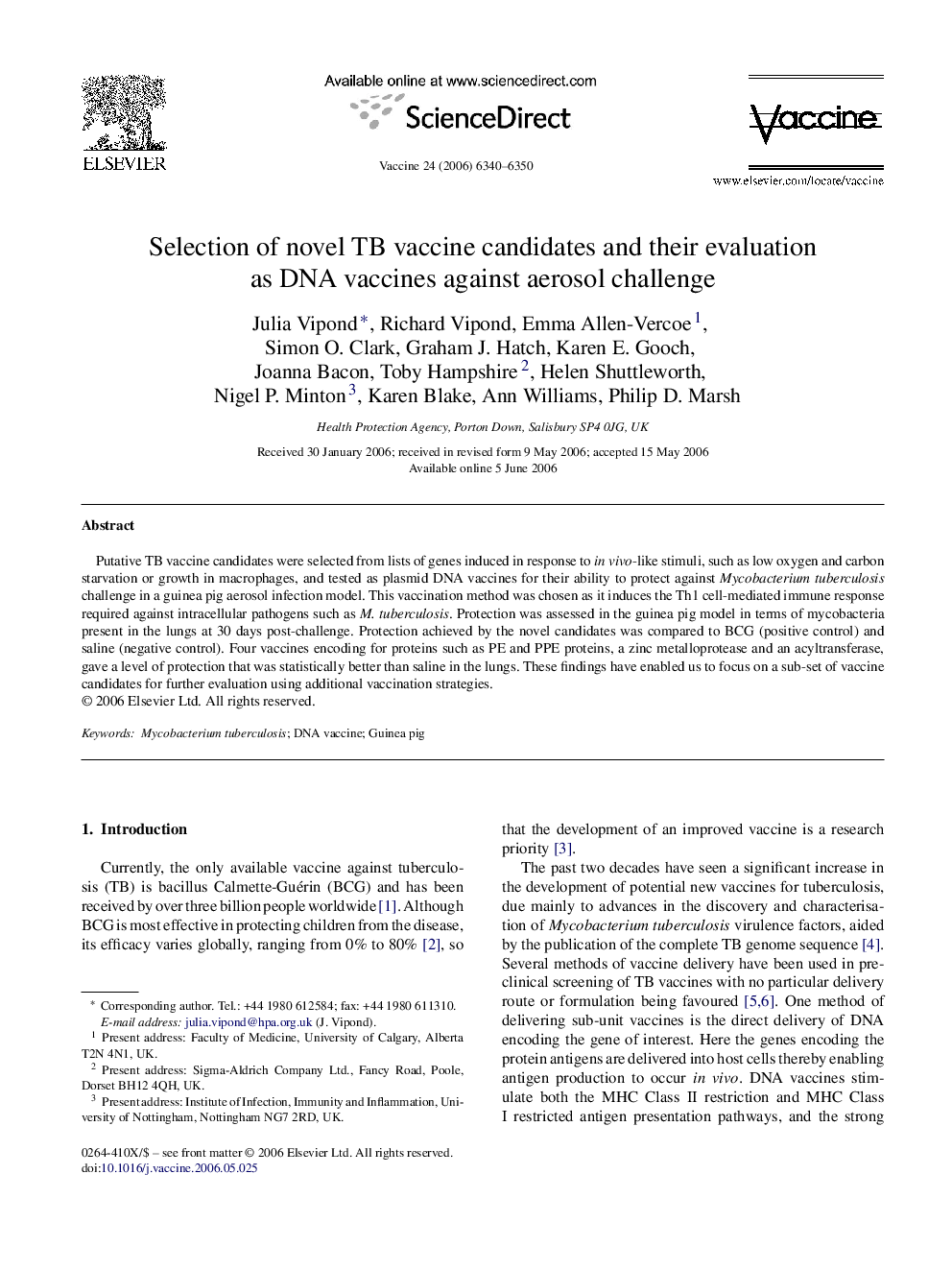| Article ID | Journal | Published Year | Pages | File Type |
|---|---|---|---|---|
| 2408924 | Vaccine | 2006 | 11 Pages |
Putative TB vaccine candidates were selected from lists of genes induced in response to in vivo-like stimuli, such as low oxygen and carbon starvation or growth in macrophages, and tested as plasmid DNA vaccines for their ability to protect against Mycobacterium tuberculosis challenge in a guinea pig aerosol infection model. This vaccination method was chosen as it induces the Th1 cell-mediated immune response required against intracellular pathogens such as M. tuberculosis. Protection was assessed in the guinea pig model in terms of mycobacteria present in the lungs at 30 days post-challenge. Protection achieved by the novel candidates was compared to BCG (positive control) and saline (negative control). Four vaccines encoding for proteins such as PE and PPE proteins, a zinc metalloprotease and an acyltransferase, gave a level of protection that was statistically better than saline in the lungs. These findings have enabled us to focus on a sub-set of vaccine candidates for further evaluation using additional vaccination strategies.
